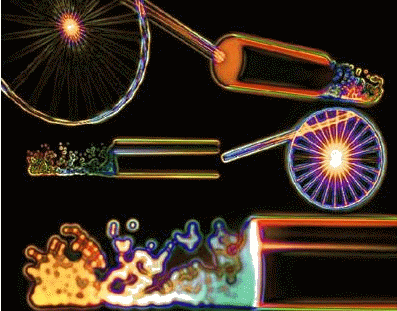 The Carnot engine
A simple heat engine concept, with four steps, where the gas always stays in the cylinder just being
heated and refrigerated.
The Carnot engine
A simple heat engine concept, with four steps, where the gas always stays in the cylinder just being
heated and refrigerated.
Every thermodynamic system exists in a particular state. A thermodynamic cycle occurs when a system is taken through a series of different states, and finally returned to its initial state.
In the process of going through this cycle, the system may perform work on its surroundings, thereby acting as a heat engine. A heat engine acts by transferring energy from a warm region to a cool region of space and, in the process, converting some of that energy to mechanical work. The cycle may also be reversed. The system may be worked upon by an external force, and in the process, it can transfer thermal energy from a cooler system to a warmer one, thereby acting as a refrigerator rather than a heat engine.
For any cycle operating between temperatures TH and TC, none can exceed the efficiency of a Carnot cycle. Carnot's theorem is a formal statement of this fact: No engine operating between two heat reservoirs can be more efficient than a Carnot engine operating between the same reservoirs. A corollary to Carnot's theorem states that: All reversible engines operating between the same heat reservoirs are equally efficient.
Maximum efficiency is achieved if and only if no new entropy is created in the cycle. Otherwise, since entropy is a state function, the required dumping of heat into the environment to dispose of excess entropy leads to a reduction in efficiency.